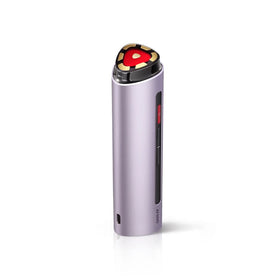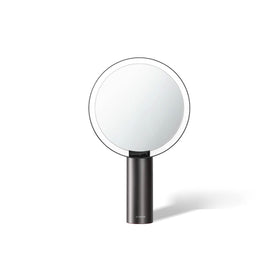¿Es seguro el endurecimiento de la piel de la radiofrecuencia?
Con el envejecimiento, nuestro cuerpo experimenta numerosos cambios, tanto internos como externos. Se pueden observar arrugas y flacidez, especialmente en el rostro, el cuello y las manos. Si bien existen diversos tratamientos antienvejecimiento para abordar estos problemas, muchas personas dudan en probarlos por cuestiones de seguridad.
El estiramiento cutáneo por radiofrecuencia es un procedimiento cosmético no invasivo popular que utiliza energía de radiofrecuencia para calentar la piel y estimular la producción de colágeno. La tecnología de radiofrecuencia comenzó a utilizarse en tratamientos de estiramiento cutáneo no quirúrgicos en 2001 y desde entonces ha ganado gran popularidad gracias a la recomendación de celebridades de renombre, lo que ha aumentado la concienciación y el interés del público en el procedimiento. Este tipo de tratamiento puede utilizarse para mejorar la apariencia de arrugas, líneas de expresión y piel flácida. Pero ¿es seguro?
Este artículo examinará los tratamientos de radiofrecuencia y responderá la pregunta de si el estiramiento de la piel con radiofrecuencia es seguro.
Parámetros de seguridad y radiofrecuencia
La radiofrecuencia es un tipo de energía que se define por su frecuencia, o el número de longitudes de onda por segundo, en el espectro electromagnético. Incluye tipos de energía comunes como el wifi, la radio y las microondas.
La radiofrecuencia es una radiación electromagnética que se encuentra en el extremo inferior del espectro. Esto significa que tiene una frecuencia más baja que la luz visible y los rayos X. La energía de RF utilizada en el estiramiento cutáneo ronda los 450 kilohercios, una energía relativamente baja en comparación con otros tipos de energía de RF.
La radiofrecuencia (RF) utilizada en el estiramiento cutáneo está diseñada específicamente para fines terapéuticos, con una emisión de energía controlada. Esto difiere de la RF emitida por dispositivos domésticos, que no está diseñada para uso médico ni se controla de la misma manera.
Al considerar todo el espectro electromagnético, los tratamientos de radiofrecuencia son bastante silenciosos. Esto los convierte en una opción segura para quienes desean reafirmar la piel sin preocuparse por efectos secundarios.
La energía de radiofrecuencia calienta las capas más profundas de la piel, promoviendo la producción de colágeno y elastina, lo que ayuda a reafirmarla y rejuvenecerla. A diferencia de los láseres, que se enfocan principalmente en la superficie de la piel, la energía de radiofrecuencia puede penetrar más profundamente, mejorando el tono y la estructura de la piel. Los tratamientos de radiofrecuencia son más seguros para diversos tonos de piel porque la frecuencia más baja no conlleva el mismo riesgo de decoloración permanente que los tratamientos con láser de frecuencia más alta.
Opte por dispositivos y tratamientos aprobados por la FDA
Para garantizar la seguridad, opte siempre por dispositivos y tratamientos de radiofrecuencia aprobados por la FDA. Estos han sido revisados y autorizados por la FDA, lo que significa que son seguros de usar. La FDA solo aprueba dispositivos de radiofrecuencia que han demostrado ser eficaces y seguros. Asegúrese de preguntar a su médico sobre el dispositivo que le van a usar.
Estudios, incluyendo los de la Organización Mundial de la Salud y la FDA, no han encontrado evidencia concluyente que vincule la exposición a radiofrecuencias con un mayor riesgo de cáncer en humanos, incluso entre quienes se exponen regularmente a niveles más altos. La Sociedad Americana del Cáncer y la FCC han publicado informes que sugieren que, si bien algunos estudios en animales han mostrado posibles vínculos con la formación de tumores en condiciones específicas, estos resultados no se han replicado en humanos, y la mayoría de los estudios no muestran una conexión entre la exposición a radiofrecuencias y el cáncer.
En los tratamientos aprobados por la FDA, la energía de radiofrecuencia se controla cuidadosamente mediante dispositivos que permiten a los profesionales monitorear y ajustar los niveles de energía para garantizar un calentamiento óptimo de los tejidos sin causar sobrecalentamiento ni quemaduras. Las tecnologías aprobadas por la FDA implican protocolos rigurosos y controles de dispositivos para monitorear la temperatura del tejido, lo que garantiza la seguridad y la eficacia de los tratamientos. Estas medidas previenen el sobrecalentamiento y promueven resultados positivos y consistentes.
Efectos secundarios del estiramiento cutáneo con radiofrecuencia
El estiramiento cutáneo con radiofrecuencia es un procedimiento cosmético seguro con mínimos efectos secundarios. El efecto secundario más común es el enrojecimiento temporal de la piel, que suele desaparecer en pocas horas. Otros posibles efectos secundarios incluyen hinchazón, hematomas e irritación cutánea. Estos efectos secundarios suelen ser leves y temporales.
Las complicaciones graves del estiramiento cutáneo con radiofrecuencia son poco frecuentes, pero pueden incluir quemaduras, ampollas y cambios en el color de la piel. Estas complicaciones son más probables si el procedimiento no se realiza correctamente. Por eso es importante que el tratamiento solo lo realice un profesional cualificado y con experiencia.
Para minimizar el riesgo de efectos secundarios, asegúrese de seguir todas las instrucciones de su médico antes y después del procedimiento.
Intentar Dispositivo facial Amiro RF
Para el antienvejecimiento, el R1 Pro utiliza energía de radiofrecuencia para estimular la producción de colágeno y la renovación celular, logrando una piel más firme y tersa. Notará resultados inmediatos con un solo uso y a largo plazo con el uso regular. El dispositivo es fácil y cómodo de usar en casa, seguro y cuenta con las certificaciones FCC, CE y PSE.
Además, las cuatro funciones (multi-RF, EMS, luz LED y calor IR) se combinan para brindar un cuidado de la piel de calidad profesional. Primero, aplique una fina capa de gel o crema facial en la zona a tratar. A continuación, seleccione el modo y comience en el nivel 1. Aumente gradualmente el nivel de energía hasta encontrar el nivel más alto con el que se sienta cómodo. Trate cada zona individualmente durante 5 a 10 minutos, dos veces por semana para obtener mejores resultados. Por último, no olvide aplicar protector solar al salir.
Conclusión
El tratamiento de estiramiento cutáneo con radiofrecuencia se ha convertido en una alternativa popular a los liftings faciales, ya que ofrece resultados similares a la piel flácida sin ser invasivo ni requerir tiempo de recuperación. Este tratamiento puede tensar la piel del rostro, cuello y cuerpo, y se realiza en menos tiempo que un lifting facial. Es una forma segura y eficaz de mejorar la textura de la piel y lograr una piel más tersa y de aspecto más joven.
Como con cualquier procedimiento cosmético, asegúrese de consultar con un dermatólogo o cirujano plástico certificado para ver si es adecuado para usted.





